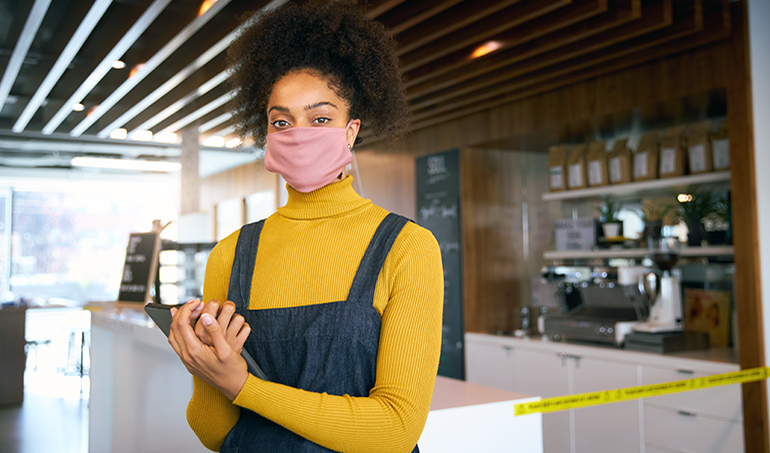Last year, the U.S. Small Business Administration's (SBA) Paycheck Protection Program (PPP) was created by Congress through the U.S. CARES Act and it was extended in December 2020 through the Economic Aid to Hard-Hit Small Businesses, Nonprofits, and Venues Act (Economic Aid Act). PPP loans assist with the payment of payroll costs, rent, utilities and more for businesses that were established before Feb. 15, 2020, and have not permanently closed.
The Economic Aid Act allows both first time ("First Draw", no previous PPP loan) or second time ("Second Draw", previous PPP loan) borrowers to apply, and funds have been set aside to help community businesses. In fact, at least $15 billion is committed to First Draw PPP loans for eligible borrowers in low-income to moderate-income neighborhoods for loans of $250,000 or less or loans to eligible borrowers with a maximum of 10 employees, and at least $25 billion is committed for Second Draw Loans to these borrowers.
Still thinking about applying for a PPP loan for your business? Here are five things to consider:
- Time is of the essence. The Economic Aid Act renewed the PPP through March 31, but it may take a lender several days to review and process your loan, so don't wait until the last minute to submit an application. Once a business owner receives their PPP funds, a new clock starts ticking: the PPP covered period. The covered period is the time a borrower has to spend the full amount of their PPP loan and is the borrower's choice of any time between eight and 24 weeks. After the covered period ends, the borrower has until their loan maturity date (the date that the final payment of the loan is due) to apply for forgiveness. Loan payments will begin 10 months after the end of the covered period, unless the borrower submits a forgiveness application before the 10 months are up and receives a decision of less than full forgiveness. No payments need to be made for fully forgiven loans.
- Use free resources. SCORE (score.org) is an independent, free resource that supports small business owners and offers guides on the PPP application, a PPP loan calculator and more. The SBA (sba.gov) also has hundreds of pages of FAQs on related topics from what documents are needed to apply for a PPP loan to how nonprofits should list "ownership" on their PPP application.
- Sole proprietors and contractors qualify, too. Many freelancers, contractors and "gig workers" have been significantly affected by COVID-19, whether from slower demand for work because companies are watching expenses or consumers putting the brakes on ride shares due to health concerns. The good news is that the SBA allows solo entrepreneurs to use a PPP loan to protect a single paycheck – your own – as long as you can provide the required documents to show income records.
- If used properly, a PPP loan essentially becomes a grant. The SBA states that PPP funds can be used only for certain expenses related to owning and operating a business. As long as a business spends the funds appropriately and can provide documentation to show that's how the money was used, a PPP loan could be fully forgiven, meaning you don't owe anything back on the loan. This time around, more expenses are eligible for forgiveness, including payroll and benefits (must make up 60% of how the loan is spent), mortgage interest/rent, utilities, business software or computing-service costs, essential supplier costs, expenditures for employee and customer safety (such as PPE) and property damage resulting from 2020 unrest.
- Money is there. While the PPP "Round 2" is slated to run through March 31, this time the pool of funds is not being distributed at the same rapid rate as the initial program. As of Feb. 15, about a month into the new lending period, less than half of the $284 billion set aside for PPP2 had been claimed. That is good news for business owners who have been undecided about applying and were concerned about the money being quickly drained like in the first round of PPP.
To get started on a PPP loan application, contact an SBA Preferred Lender such as TD Bank or use the SBA's Lender Match program to apply through a Community Financial Institution (CFI).
